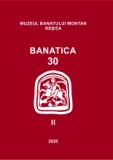The Marga family - A genealogical profile of a noble family in the county of Severin (15th–17th centuries)
The Marga family - A genealogical profile of a noble family in the county of Severin (15th–17th centuries)
Author(s): Ligia BoldeaSubject(s): Cultural history, Local History / Microhistory, 15th Century, 16th Century, 17th Century
Published by: Editura Mega Print SRL
Keywords: the medieval Banat; Severin County; Marga; noble family; genealogy;
Summary/Abstract: A Romanian nobiliary elite grew up in the medieval mountainous and piedmontainous Banat, integrated with its specific shapes in the country nobility due to the interest the central power had in enabling those local nobles to take part in the military frequent campaigns that that border territory of the Magyar kingdom was involved in the 14th – 17th centuries. A series of noble families took shape there, well individualized both by their members’ identity and the ensemble of their possessions; given an uninterrupted line of generations, they were familial nuclei that impress in many of the cases by their longevity, from the first documentary records in the second half of the 14th century up to the end of the 17th century. Certainly, we might to stand out the great Romanian noble families in the Banat, with tens of villages or parts of them, with members frequently named egresius, but also some more modest families, rarely possessing more than their native village (by donation and acquisitions) that set as autonomous units given the public services they developed. The members of the first category appointed for counts, vice-counts, or bans and vice-bans of Severin County or Jaica, as well as knights, courtiers or clerks around the Royal Court, so to say functions of a great responsibility, representing the central authority first of all, the other local public men, appointed as nobiliary judges, prime-judges, town criers, or jury men, arbitrators or men of the king, were rather exponents of the noble community in the area. The case of the family of Marga is different somehow, a sample of a contradictory state of things: on the one hand, two of the family’s members came near the most important local dignities – Jacob of Marga, a vice-ban and castellan of Severin between 1459 and 1478, the other one, George Marga (Jacob’s son), a deputy ban of Severin, in 1515. Their power and influence or their welfare, on the other hand, seem fragile and random if seen through what the papers let us know for 150 years about, from the first attestations around 1470 up to the middle of the 17th century. I have thought that this is a case to be brought to the researchers’ attention as “another” way to turn to what a statute of noble meant at that time. Consequently, I have focused on the structure and genealogical lines of the Mărgans in spite of questions and inconsistency resulting from lacunar documentary data.
Journal: BANATICA
- Issue Year: 2/2020
- Issue No: 30
- Page Range: 137-154
- Page Count: 18
- Language: English

